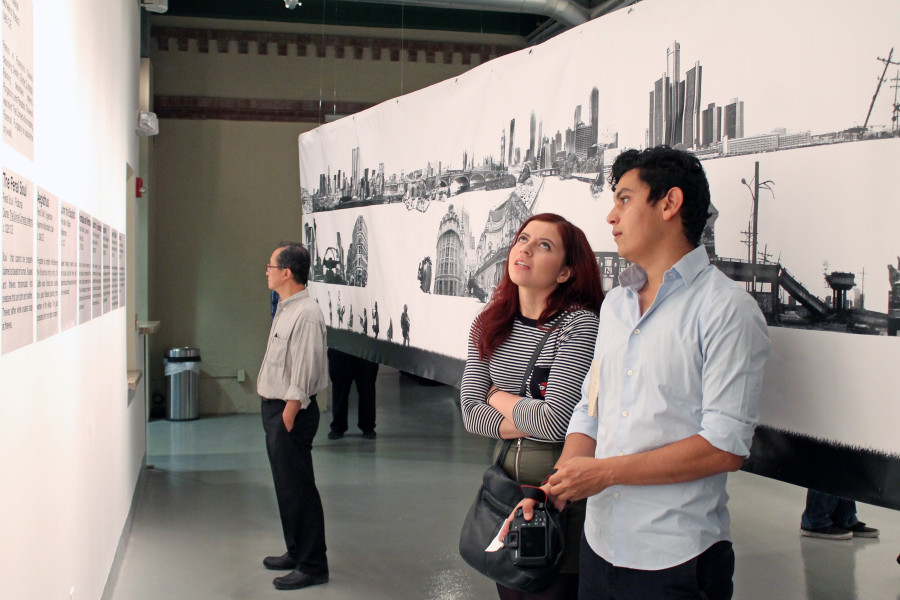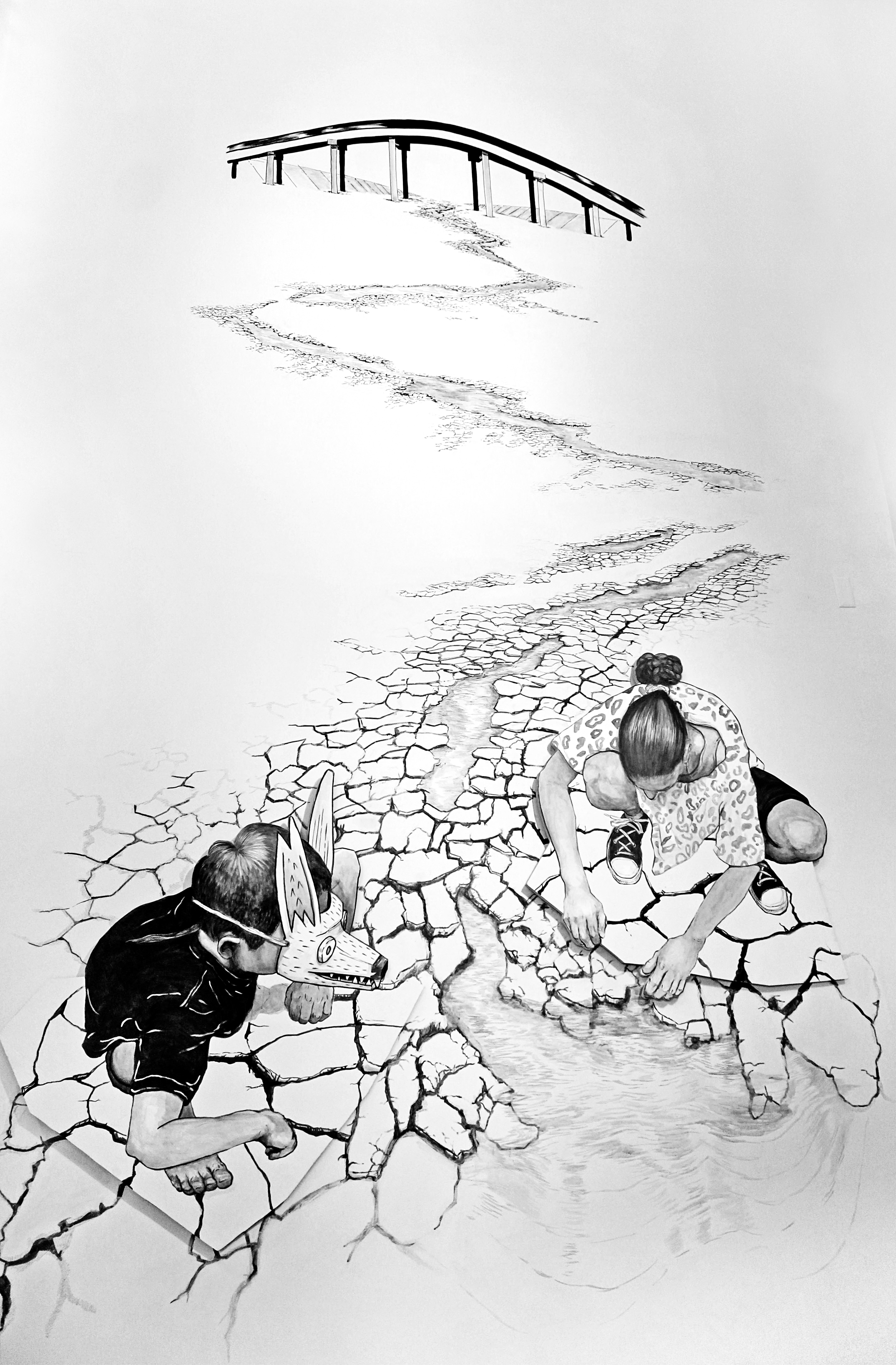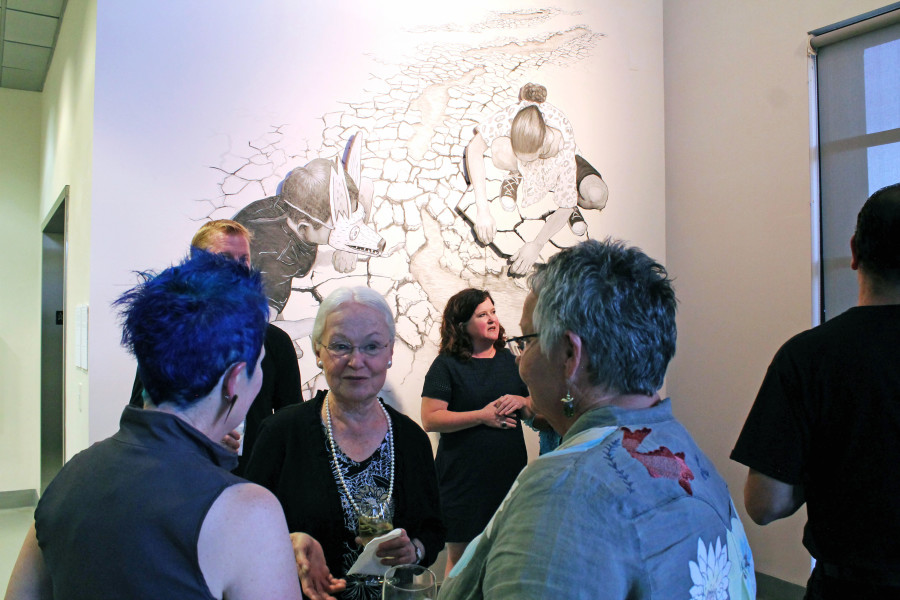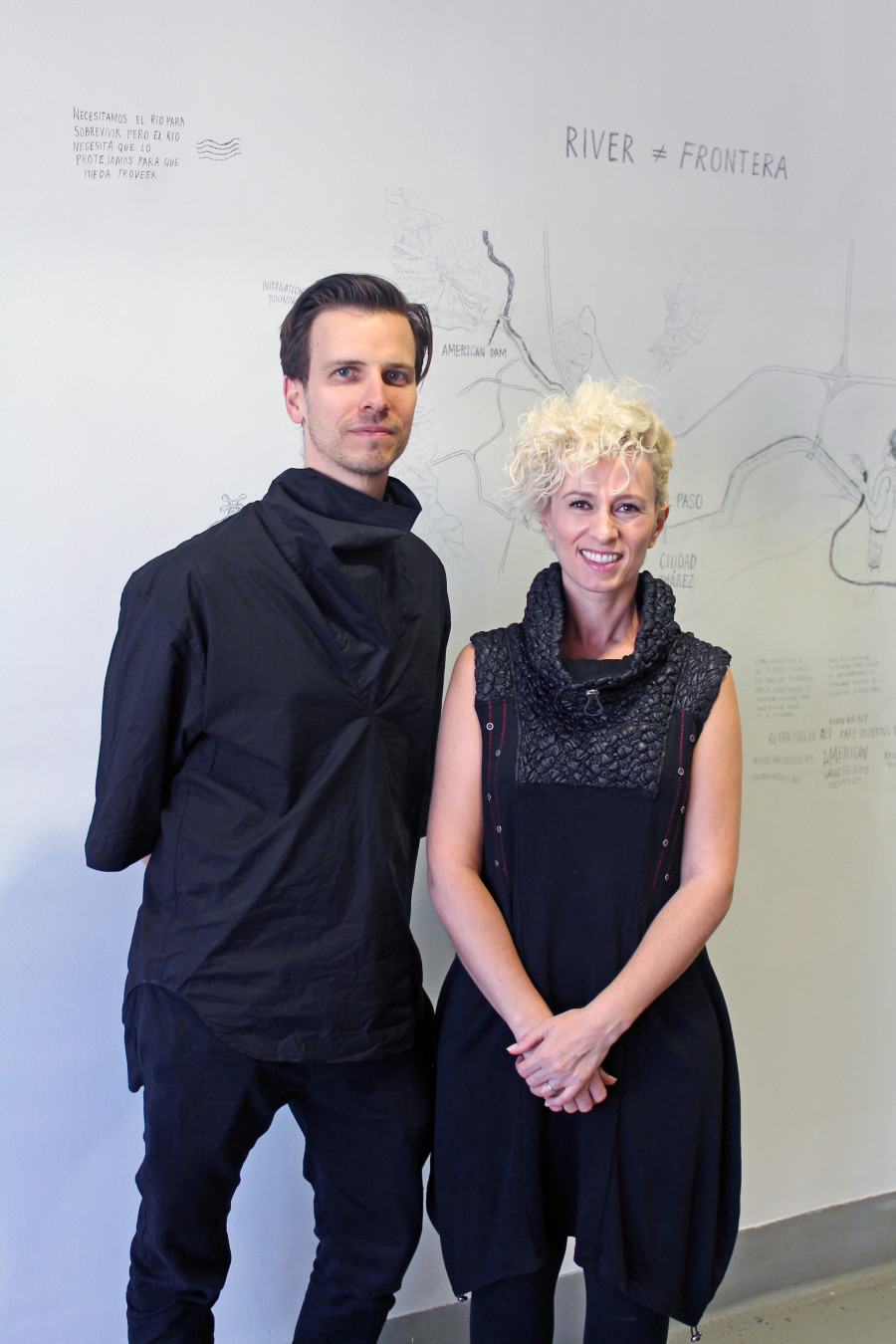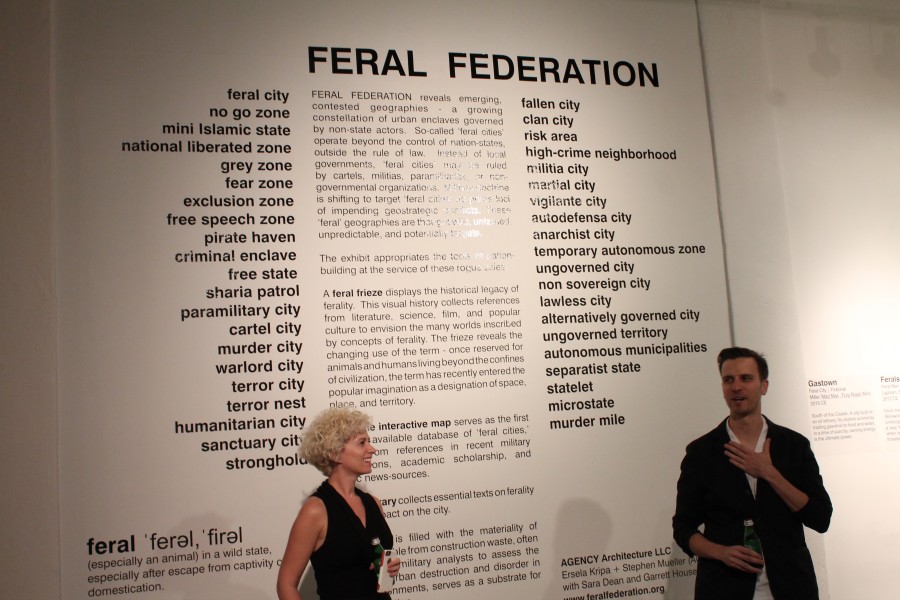Text: Eric Acosta | Photo: Rubin Art Center
Stanlee and Gerald Rubin Art Center exhibits explore architecture and borders.
El Paso is maturing—whether it’s a big or small change, it is clear El Pasoans are ready for more. The Stanlee and Gerald Rubin Art Center’s new exhibits couldn’t have come at a better, or more crucial time.
“Our relationship as a community with the river is politicized by policy, by the way the river is governed and commodified,” local artist Zeke Peña said. He is the first recipient of the Ruben Center Excellence Endowment. His new installation “Reclaim” explores the Rio Grande River’s political and cultural history.
“Carlos Aceves put it perfectly: our area used to be defined by the river, now our region is defined by a border,” Peña said.
Aceves was part of Peña’s first phase of the river project, “Bravo/Grande.” The first phase focused on oral histories of people from the Ysleta, Juarez and El Paso region. For more on “Bravo/Grande” see Fusion’s August coverage.
“Reclaim” is the second phase of that larger body of work. The ideas for “Bravo/Grande” and “Reclaim” were born from a collaborative, community based project focusing on migrating people’s access to water during their border crossing.
“Where I arrived at with that project, a lot of the answers and story was really in the river. Water effects every level of our society and our culture, especially when it becomes politicized like our water throughout the border.”
Peña was born in Cruces, but grew up here in El Paso. “I have an interesting relationship with El Paso,” Peña said. “[My family] migrated to El Paso and I don’t really have any family or strong routes directly in El Paso or even Juarez.”
Zeke’s mother’s family lived in southern New Mexico for centuries. His father’s family is from south Texas. His paternal grandfather and grandmother immigrated from Coahuila, Mexico.
“I think that’s a testament to the area,” Peña said. “Even though there is a community that has been [in El Paso] a long time, most of the community that are there now were all at some point migrant. [El Paso] is a place of passing, it is traditionally a place of migration, a crossroads.”
One of the Rubin Center’s other installations, “Feral Federation,” provides a broader look at city design and definition. The work is by architectural design collective AGENCY. They are the 2010-11 recipients of the Rome Prize in Architecture, and the 2010 winners of ONE PRIZE, an international design competition for creating productive green space.
“We’re interested in trends that classify, or affect cities,” Ersila Kripa said. She was also one of this year’s TEDxElPaso speakers.
She explains that a feral city is a city once under a government or rule of law that is starting to be ruled by non-government agencies. For example, these feral cities could be run by not-for-profit, non-governmental organizations or the Islamic state. Part of the “Feral Federation” project is an online, interactive map labeling the cities that are feral, or at risk of becoming feral. Mexico’s cartels and shaky political situation have made Juarez a feral city.
“The problem with labeling them as feral is it affects their credit rating, how we intervene militarily, humanitarian aid, tourism and the economy,” Kripa said. “Is there a way for these cities, who have no say in being labeled, to reorganize and fight back?”
Kripa and AGENCY’s other principal member Stephen Mueller have been living in El Paso for a year, and plan to continue doing so for some time.
“As an architect, it’s a really exciting place. It seems to be a little bit undefined, and open to other ideas on how a city might function. Then it’s right across from Juarez, so you have this feral city on one side and then a very stable city that’s trying to define itself on the other.”
AGENCY is here working on their new book, Fronts of Security and the Developing World. The book explores how militarized spaces in the U.S and around the world are shaping a new kind of urbanism. They are putting together a map of all U.S. military bases in the States and around the world.
“The military is building replicas of cities in tests for urban warfare,” Kripa said. “They start to rival the sizes of the cities that are occupied by people, so the question in the book becomes what is the history of this other type of urbanism that no is looking at or talking about.”
Ersila and AGENCY are interested in the future of cities and its citizens.
“The architects who design [military cities] also design urban areas and civilian buildings,” Kripa said “So the question there becomes, where do they draw lines in their thinking. Is that military knowledge their gaining affecting how they design civilian life?”
Find information and Rubin Center hours at rubin.utep.edu
More on AGENCY at agencyarchitecture.com
More on Zeke Pena at zpvisual.com

